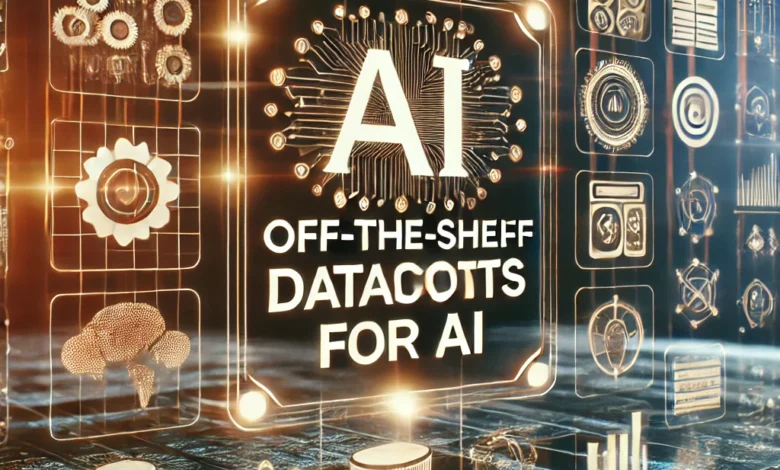Why Off-the-Shelf Datasets from Nexdata.ai Are a Game Changer for Your AI Projects

In the ever-evolving world of artificial intelligence (AI), data is often referred to as the new oil. Without quality data, AI models can’t achieve their full potential. However, gathering and preparing data for AI training can be a complex, time-consuming process. This is where off-the-shelf datasets come into play, offering an efficient and cost-effective solution for AI developers.
The Growing Importance of Data in AI
AI relies heavily on vast amounts of data to learn and make predictions. Whether you’re working on machine learning, natural language processing, or computer vision, the quality and quantity of your data are crucial to the success of your AI model. But finding, cleaning, and annotating data for training purposes can be a massive undertaking. This is why more and more AI developers are turning to off-the-shelf datasets as a reliable resource.
Off-the-shelf datasets provide ready-made collections of data that can be directly used for AI training. These datasets are curated, cleaned, and sometimes annotated, meaning they are ready for use out of the box. By leveraging these pre-existing datasets, AI teams can significantly shorten their project timelines and reduce the resources needed for data collection.
The Advantages of Using Off-the-Shelf Datasets
- Time and Cost EfficiencyOne of the most significant advantages of using off-the-shelf datasets is the time and cost savings. Collecting data from scratch often requires months of effort, from setting up data collection processes to cleaning and annotating the data. With off-the-shelf datasets, much of this work has already been done for you. These datasets are typically available for immediate use, allowing your team to focus on the core aspects of model development, such as tuning algorithms and improving accuracy.
- Quality AssuranceData quality is a critical component of any AI project. Low-quality data can lead to inaccurate models and unreliable results. Off-the-shelf datasets are curated by experts and often come with a guarantee of high quality. They are cleaned, organized, and sometimes even annotated to ensure they are ready for use in AI training. Many providers also update their datasets regularly to ensure that they remain relevant and high-quality, ensuring that your AI model is trained on the best available data.
- Diversity and ScopeAI models benefit from diversity in their training data. By using off-the-shelf datasets, AI developers gain access to a wide variety of data from different domains, including text, images, video, and more. This variety can be especially helpful for training robust AI models that can generalize well across different scenarios and applications. The availability of diverse datasets also allows developers to tackle complex problems, such as understanding human behavior or recognizing objects in images, by training their models on a broad spectrum of data.
- Faster Time to MarketTime is of the essence in the AI industry, where speed to market can be a decisive factor in success. Off-the-shelf datasets significantly reduce the time it takes to build and deploy an AI model. With pre-prepared datasets, you can skip over the data collection and preparation phases, allowing you to fast-track your project. This quick turnaround is especially beneficial for industries like healthcare, finance, and retail, where AI innovations can drive immediate value.
How Off-the-Shelf Datasets Fit Into AI Training Pipelines
Off-the-shelf datasets seamlessly integrate into the AI training pipeline. Once you have selected a dataset that fits your needs, the next step is to load it into your machine learning models. Many AI platforms and frameworks are designed to work with external datasets, allowing you to plug and play with minimal setup.
In the case of supervised learning, off-the-shelf datasets often come pre-labeled, which is a huge benefit when it comes to training models. For example, if you’re developing an image classification model, you can find datasets where each image is already tagged with the appropriate label. This saves a tremendous amount of time compared to manually labeling thousands or even millions of images.
Use Cases for Off-the-Shelf Datasets in AI Projects
Off-the-shelf datasets are versatile and can be used across various AI applications. Some of the common use cases include:
- Computer VisionComputer vision applications, such as facial recognition, object detection, and autonomous vehicles, rely heavily on image and video data. Off-the-shelf datasets for computer vision often include millions of labeled images, enabling developers to train their models with real-world data.
- Natural Language Processing (NLP)Natural Language Processing models require vast amounts of text data to understand and generate human language. Off-the-shelf datasets for NLP can include everything from books and articles to social media posts, providing the variety needed to build accurate models for text classification, sentiment analysis, and chatbots.
- Speech RecognitionAI models for speech recognition need a large volume of voice data to accurately transcribe and interpret spoken language. Off-the-shelf datasets in this domain include transcriptions of spoken words, conversations, and even noisy environments, helping developers train models that can accurately recognize speech in a variety of settings.
- Healthcare AIHealthcare is one of the most promising fields for AI innovation, but data privacy and security concerns often make data collection difficult. Off-the-shelf datasets for healthcare AI provide anonymized patient data, medical images, and clinical records that can be used to train models for diagnostics, treatment recommendations, and personalized healthcare solutions.
The Role of Data Annotation in AI Training
While off-the-shelf datasets are a great resource, many AI models require annotated data for specific tasks. Data annotation involves labeling data to teach the AI model what to look for. For example, in image recognition, data might need to be labeled with information such as “cat” or “dog.” Some off-the-shelf datasets come pre-annotated, which can save a lot of time. However, in cases where further annotation is needed, many companies specialize in providing high-quality data annotation services to enhance the training process.
Challenges of Using Off-the-Shelf Datasets
Although off-the-shelf datasets offer many benefits, they are not without their challenges. One of the main issues is that the datasets may not be perfectly suited to your specific use case. While there is a vast range of datasets available, you may still need to customize the data to fit your needs. This could involve additional preprocessing or data augmentation techniques to make the dataset more relevant for your AI model.
Another potential challenge is the risk of overfitting. If your AI model is trained solely on a single off-the-shelf dataset, it might become too specialized and fail to generalize well to new, unseen data. To mitigate this risk, it’s essential to diversify your dataset sources and use data augmentation techniques to enrich your training process.
The Future of Off-the-Shelf Datasets in AI
The demand for off-the-shelf datasets is expected to grow significantly as AI continues to advance. As more industries adopt AI solutions, the need for high-quality, diverse datasets will increase. The future of off-the-shelf datasets will likely involve even more specialized collections of data, as well as improvements in data annotation and curation processes to ensure datasets remain relevant and up-to-date.
Additionally, advances in synthetic data generation and data augmentation techniques will help make off-the-shelf datasets even more powerful. Synthetic data, generated using AI algorithms, can complement real-world datasets and provide more diversity, helping to further reduce biases in AI models.
You can explore more about dataset solutions and AI-related resources by checking out this link for a comprehensive dataset provider.
In conclusion, off-the-shelf datasets offer a wide range of benefits for AI projects, from time and cost savings to enhanced data quality and diversity. By leveraging these ready-made datasets, AI developers can accelerate their development cycles, create better models, and drive innovation in a variety of industries. However, like all tools, off-the-shelf datasets should be used thoughtfully and in conjunction with other techniques to ensure the best results for your AI projects.

